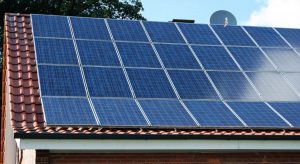What Are The 4 Types Of Solar Energy? Get An Accurate Overview
Discover the 4 types of solar energy and their benefits in our informative blog post. Gain insights into harnessing the power of the sun efficiently. You’re probably familiar with the concept of solar energy, but did you know that there are actually four different types? From photovoltaic cells to solar thermal systems, each type has its own unique way of harnessing the power of the sun. In this article, we’ll take a closer look at these four types of solar energy and explore how they are being used to create a greener and more sustainable future. So sit back, relax, and let’s dive into the world of solar energy together!
Photovoltaic Solar Energy
Photovoltaic solar energy refers to the conversion of sunlight into electricity using photovoltaic cells. These cells, also known as solar panels, are made up of semiconductor materials like silicon. When sunlight hits the photovoltaic cells, it excites the electrons in the semiconductor material, creating a flow of electric current. This direct current (DC) is then converted into alternating current (AC) using an inverter, making it suitable for powering homes and businesses.
One of the major advantages of photovoltaic solar energy is its ability to generate electricity in a clean and renewable manner. Unlike traditional power plants, which rely on the burning of fossil fuels, solar energy produces zero greenhouse gas emissions and contributes significantly to reducing carbon footprint. Additionally, once a solar panel system is installed, it requires minimal maintenance and has a lifespan of over 25 years, making it a cost-effective long-term investment.

Photovoltaic solar energy is widely applied in various sectors. Residential buildings often install solar panels on rooftops to generate their electricity, reducing reliance on the power grid and saving on electricity bills. Commercial and industrial facilities also harness solar energy to offset their energy consumption and reduce operating costs. Moreover, solar energy can be used in remote areas where grid connection is not available, providing power for lighting, water pumps, and telecommunications equipment.
Checking the question again: What Are The 4 Types Of Solar Energy?
Solar Thermal Energy
Solar thermal energy, also known as solar heating, utilizes the heat from sunlight to generate thermal energy. Unlike photovoltaic solar energy, which converts sunlight directly into electricity, solar thermal energy focuses on capturing and utilizing the sun’s heat. The most common applications of solar thermal energy include water heating, space heating, and pool heating.
The process of solar thermal energy begins with the collection of sunlight using solar collectors, which are typically flat plates or evacuated tubes filled with a heat-absorbing fluid, such as water or antifreeze. As sunlight is absorbed by the fluid, it heats up and transfers the captured thermal energy to a storage system or directly to the desired application. In systems with a storage component, the heated fluid is stored in insulated tanks, ready for use when needed.
Solar thermal energy presents several advantages. Firstly, it is a cost-effective solution for heating water or buildings, as it significantly reduces the reliance on traditional heating systems powered by electricity or fossil fuels. Secondly, solar thermal systems can be integrated with existing water heating or heating systems, allowing for easy retrofitting and maximizing energy efficiency. Finally, solar thermal energy is environmentally friendly, as it eliminates the need for burning fossil fuels and contributes to reducing greenhouse gas emissions.
The applications of solar thermal energy are diverse. Residential buildings can benefit from solar water heating systems, providing them with hot water for domestic use. Large-scale solar thermal systems can be employed in commercial and industrial settings to meet the heating needs of processes, such as food production or manufacturing. Additionally, solar thermal energy can be used for heating swimming pools, both in residential and commercial settings, reducing energy costs and extending the swimming season.

Concentrated Solar Power
Concentrated solar power (CSP) is a type of solar energy that focuses sunlight to produce high-temperature heat, which is then used to generate electricity. CSP utilizes large mirrors or lenses to concentrate sunlight onto a receiver, typically a tower or a trough filled with a heat-transfer fluid, such as oil or molten salt. As the fluid absorbs the concentrated heat, it generates steam, which drives a traditional turbine to produce electricity.
The advantage of concentrated solar power lies in its ability to generate electricity even when sunlight is not directly available, such as during cloudy or nighttime conditions. With the help of thermal energy storage systems, the excess heat generated during high-sunlight periods can be stored and used later to continue electricity production. This feature makes concentrated solar power a reliable and dispatchable renewable energy solution.
CSP finds its applications in large-scale power generation. Due to its capacity to provide consistent power output, concentrated solar power is well-suited for supplying electricity to the grid, eliminating the intermittency issues commonly associated with other renewables like solar and wind. CSP plants can be found around the world, often in areas with high solar irradiance, where they contribute to the diversification of energy sources and the reduction of carbon emissions.

Solar Architecture
Solar architecture, also known as passive solar design, is an approach to building design that harnesses the energy of sunlight to provide heating, cooling, and lighting naturally. Instead of relying on mechanical systems, solar architecture utilizes the principles of building orientation, shading devices, thermal mass, and ventilation to optimize energy efficiency and comfort within a building.
In solar architecture, the building orientation is crucial to maximize solar exposure. By aligning the building’s main facades towards the sun’s path, it can take full advantage of sunlight during the winter months for heating, while minimizing direct sunlight penetration during the summer months to mitigate cooling needs. Shading devices, such as overhangs or louvers, can be strategically placed to block unwanted solar heat gain and glare.
Thermal mass, such as concrete or water, is used in solar architecture to store and release heat. During the day, when sunlight heats up the materials, they absorb and store the thermal energy. At night, when the external temperature drops, the stored heat is gradually released, providing a natural heating effect. This method helps reduce the need for additional heating systems, saving energy and reducing costs.
Solar architecture offers a multitude of advantages. Firstly, it significantly reduces the energy consumption of a building, resulting in lower utility bills and reduced environmental impact. Secondly, the reliance on natural lighting promotes better indoor comfort and reduces the need for artificial lighting during daylight hours. Solar architecture also provides occupants with a connection to nature and daylight, which can improve productivity and well-being.
The applications of solar architecture are diverse, ranging from residential buildings to commercial and institutional structures. Homeowners can incorporate passive solar design principles into the construction or renovation of their homes, optimizing energy efficiency and comfort. Educational institutions, office buildings, and public facilities can benefit from solar architecture by creating naturally lit and comfortable spaces, promoting sustainability and green building practices.
Again: What Are The 4 Types Of Solar Energy?
In conclusion, solar energy offers a range of options for harnessing the power of the sun. From photovoltaic solar energy, which directly converts sunlight into electricity, to solar thermal energy that captures heat for various applications, each type has its advantages and applications. Additionally, concentrated solar power provides a reliable solution for large-scale electricity generation, while solar architecture utilizes the principles of building design to maximize energy efficiency and comfort. With the ever-growing demand for clean and renewable energy, solar energy continues to play a crucial role in our transition towards a sustainable future.

